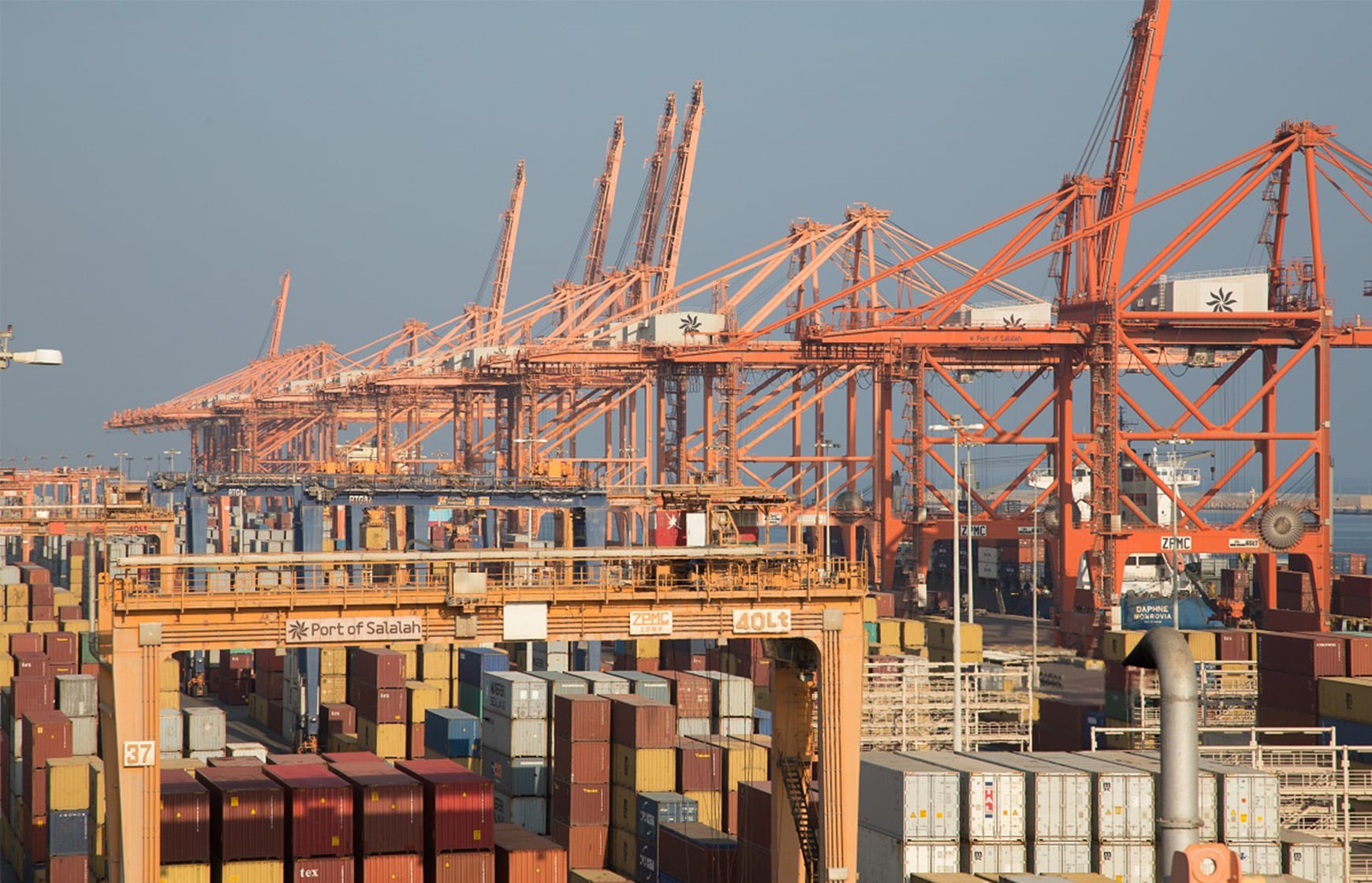
Our Terminal
Strategically located on the major East-West Shipping Lane, the Port of Salalah is a major Arab Gulf regional gateway port and transshipment hub on the Arabian Sea. It is viewed as the region's best located port for access the Middle East, Indian Subcontinent and East Africa.
The multi-purpose port, has facilities to handle bulk cargo, containers, general and liquid cargoes, cruise and navy ships, and in addition offers value added services such as bunkering, container repairs, a container freight station, warehousing and ship repairs.
Operational since November 1998, the Port of Salalah Container Terminal has a 2.4 km container berth quay and seven berths of up to 18m draft. Its infrastructure can handle the world's largest container vessels, as well as bulk cargo, bunkering and warehousing. The terminal has an annual capacity of 5 million TEU.
At a glance
- Location: savings due to minimum deviation time on the main East-West shipping lane
- Service Quality: State-of-the-art equipment and professional workforce delivering high productivity
- Expanding regional market: minimum deviation to Indian Subcontinent, East Africa, Red Sea/Levant Region and the Arabian Gulf, and access to key regional markets including the Asia, Europe
- Connectivity: over 3000+ vessel calls to over 52 port destinations annually allowing possibilities to meet the long-term needs of customers and shipping lines
- US Free Trade Agreement (FTA): tax exemption on goods with 35% value added in Oman, along with simple customs procedures and competitive tariffs at a US government's Secure Freight Initiative Charter port
- Free Zone benefits: adjacent free-zone with availability of land at the lowest rate in the region
- Inter-modal hub with sea, land and air connections located within a short distance
- Safe port with stable political and economic climate
Second most Efficient Terminal in the World
In 2023, Salalah port retained its place as the second most efficient container port in the world for the second year in a row. The ranking is taken from the 2022 Container Ports Performance Index (CPPI) published by the World Bank and S&P Global. The Port of Salalah also claimed the first position for the West Central and South Asia Region. Over the previous five years, the Port has succeeded in improving an already high productivity by a further 20%. This achievement is recognition of the commitment and continuous improvement mindset of the team, support from its customers, and prompt services of the various authorities.
Investment
APM Terminals signed a concession agreement with the government of Oman to build and manage this world-class container facility. APM Terminals holds a 30% stake in the Port operating company Salalah Port Services. Other shareholders include the government (20%), government pension funds (23%), and others (27%).
Since then, the Port has made significant strides towards achieving world-class operational standards. Around US$800 million has been invested in infrastructure. The expansion and development of the Port of Salalah plays an important role in meeting present and future customer requirements and ensures increased efficiency and faster vessel turnarounds. In 2017, the road infrastructure around the port was improved.
Location
The Port of Salalah is situated in Dhofar in the southern region of Oman, located 15 km south of Salalah. It offers almost zero deviation from the major trade lanes of Asia-Europe, and equidistant to the growing markets of East Africa, Indian Subcontinent and the Arabian Gulf. Our location guarantees our customers with transit times that are better than other competing ports in the region.
This makes it advantageous for major shipping lines to use Salalah as a gateway for their regional networks and thereby saves cost.
Our connectivity includes a network of the world's biggest shipping lines, including Maersk, MSC, USAC and others to reach the world. This connectivity, of over 3,200 vessels per year, allows our customers to reach over 50 direct ports internationally – all from the Salalah location.